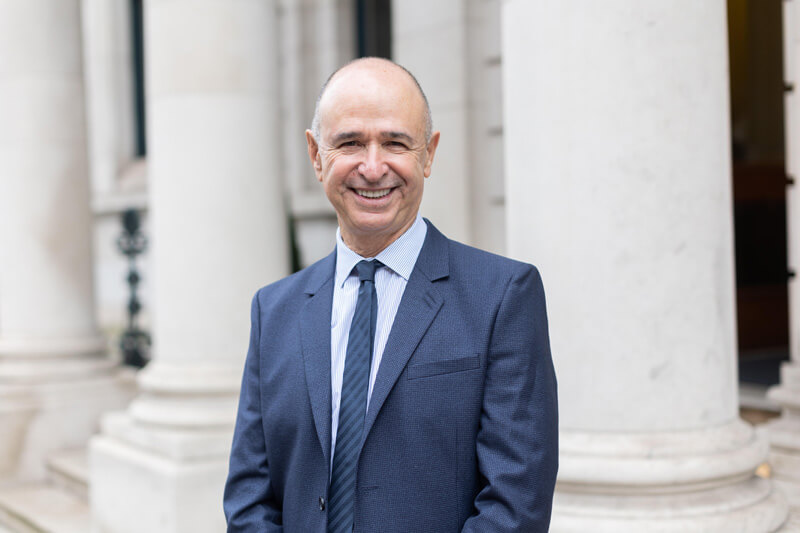Major changes in society are often the result of mass social movements, writes Dr. Peter Lachman. In our age, climate change serves as an example as a social movement, driving transformative change. Activists have come together, demonstrating on the streets, leading to a new focus on the issue, compelling society to pay attention to this critical challenge and its future implications.
The public’s imagination becomes engaged, which then results in societal change. Most political movements begin this way; a small group of activists comes together, igniting a spark for change. These sparks are important, as they can lead to a fundamental change in the way society operates.

Yet, we do not see the same type of action for patient safety. Perhaps it is because patient safety is a more personal issue. I contend it is as important as issues such as climate change. The public may complain about unsafe care, but there is no active movement on the same scale as those for climate change.
Harm to patients has been acknowledged for years. It is now 25 years since the seminal reports published in the USA which led to the modern focus on patient safety and quality of care. However, the momentum to safer care remains stagnant, despite progress in understanding how to be safe.
Over the past 25 years we have focused on developing Patient Safety and Quality Improvement Science theories and methods. Many programmes have been introduced to improve care, yet the progress feels insufficient – care remains variable while both patients’ safety and staff wellbeing often falls short of acceptable standards. This challenge is faced globally rather than being limited solely to Ireland. If one looks at the reports from Imperial College and extrapolate them to Ireland, I can assume that we have made some progress but have a long way to go.
My assessment as to why this is the current position is that the concept of quality and safety is all about beliefs and attitudes – the WHY – and only then is it about the knowledge and skills of HOW to be safe and WHAT is required to be safe. Uptake has been variable regarding sustainable solutions, or a lack of effective dissemination of positive interventions within healthcare settings.
Despite numerous programmes launched over the past 15 years by the HSE aimed at improving care quality and ensuring patient safety, the focus has been on the WHAT and HOW. Implementation countrywide is a recurring issue. Few frontline staff will have read the HSE Patient safety Strategy. Buy in from overworked staff has been difficult to attain and the gains we have made are often lost. The challenge is not in what to do but in the implementation of what we know we need to do.
The challenge remains as to how we can galvanise our current progress into a mass social movement which emphasises a relentless dedication toward delivering safe care. In order to achieve this goal a cultural change is required, so that quality and safety are seamlessly integrated into our operations.
On my recent visit to India for the CAHO annual meeting, I saw a possible way forward. CAHO started as a group of accredited hospitals that sought to improve their performance. Although they are in the private or “not for profit” sector, their goal has been to build momentum through the development of a social movement for safety and improvement. As a result, CAHO’s evolution has been rapid and it is now a burgeoning social movement fostering a transformation momentum across participating hospitals in a resource limited country.
They are using Demings concept of pride in your work to drive improvement to significantly enhance high healthcare quality. At the CAHOCON conference there was a palpable move for change. Hospital managers mingling with clinicians were keen to share their experiences on the quality and safety journey.
Imagine if all the hospitals in Ireland drove the patient safety agenda, rather than the HSE and DOH. Managers who are members of HMI would be key drivers of this programme, with a desire to continually improve care and learn from each other. It would be one large learning collaborative, with the role of the HSE to be the facilitator of this learning health system, and regulation by HIQA would not be a burden but a welcome to help us improve further.
What are the implications of all of this for hospital managers and their teams? Can you, as a manager, create enthusiasm around safety and quality by developing a bottom-up movement focussing on safety and quality? It is what you want to do, not what you have to do? Or do deeper cultural barriers prevent necessary transformations from taking root?
I challenge HMI to be curious and become more than a forum for managers. HMI could become a social change movement using the theories change, in order to make a difference. Have a look at CAHO, where there are lessons from the “Global South” to influence the “North”.
Make WHY we need to be safe the first step in the next stage of our journey.

